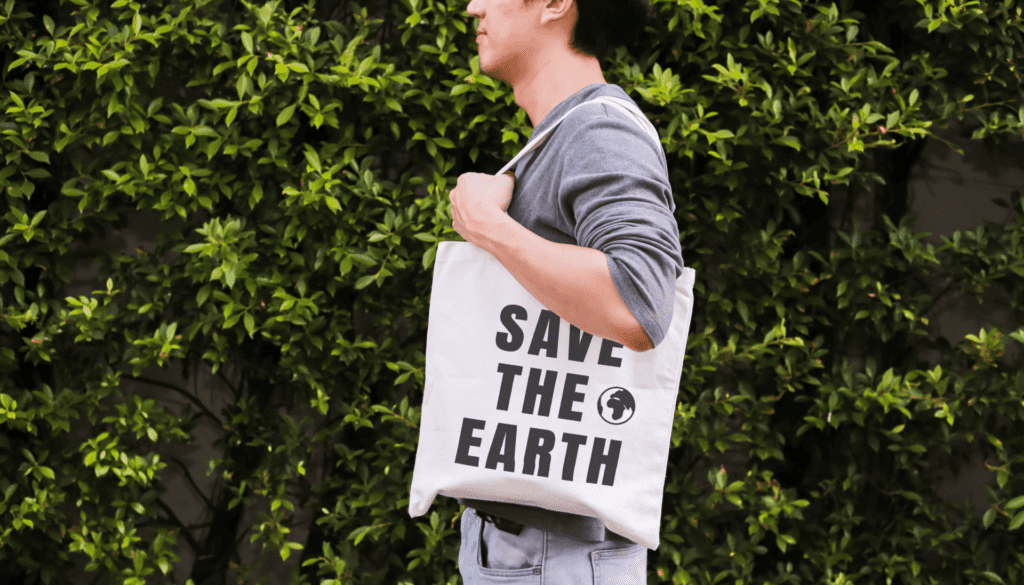How to Measure Your Carbon Footprint (And What It Is!)

SAGE. How to Measure Your Carbon Footprint (And What It Is)
Without a doubt, we all know that our planet is suffering from the effects of climate change. We see it on the news in the form of tsunamis, hurricanes, droughts, devastating forest fires. However, we also see plenty of hope. We see young activists standing up, we see clearer skies as commutes and flights have drastically reduced in the era of COVID-19.
But how do we measure our planet’s health? There are plenty of regulated environmental indicators that the government of Canada and other countries measure, but did you know you can measure your own individual impact on the planet?
Yes, you can! With a carbon footprint.
What is a carbon footprint?
A carbon footprint is the amount of carbon dioxide released into the air because of your own energy needs. You need transportation, electricity, food, clothing, and other goods – all of which require mining for materials, manufacturing and transportation. Your choices can make a difference!
What impacts my carbon footprint?
There are many, many things that contribute to increasing (or decreasing) your carbon footprint. Here are some of the biggest contributors.
Food
- Food production causes emissions including carbon dioxide (CO2), methane (CH4), and nitrous oxide (NO2) – most of which comes from farming and raising animals for food production.
- Farm animals produce millions of tonnes of CO2 and CH4 each year due to their food digestion
- Eating vegetarian is certainly one option to reduce your carbon footprint, but it isn’t the only one! Eating locally grown food reduces the transportation impact, but eating one vegetarian meal a week would save even more energy. Choosing low-impact proteins can reduce your carbon footprint too – choosing chicken over beef reduces your carbon footprint by 882 pounds!
- Eating organic reduces the energy required for farming by 30-50%, but oftentimes it requires more human labour which drives up the price at the grocery store. Try exploring your favourite local farmer’s market for cheaper, local options!
Power
- Electricity is what turns on our lights, powers our appliances, connects us to the internet, allows us to binge-watch the latest Netflix show and heats our water, among many other things. But power plants that generate electricity can emit carbon dioxide by burning coal to create power. Electricity accounts for the largest carbon footprints.
- Gas heating creates the second highest amount of carbon dioxide. Many houses in Canada use natural gas, oil or electricity to keep them warm in the winter. Decreasing your reliance on heating by lowering the temperature a few degrees and adding layers is one way to reduce your carbon footprint.
There are many other ways that industries contribute to greenhouse gas increases. In fact, in 2016 in Canada, our nation accounted for 1.5% of global greenhouse gas emissions (GHG). That doesn’t seem like a lot when you compare against the world’s epicentre of consumer good production – China. China in 2016 accounted for 25.8% of GHG.
Ok, so what can you do about it?
Before you can reduce your impact, you first need to understand what it is! This easy-to-use carbon footprint calculator will take your information and tell you just what your impact is.
Around 24% of Canadian emissions come from transportation, with automobiles being the biggest contributor. Choose cycling, public transportation, or walking whenever possible. You can even use this as an opportunity to dump your old truck and upgrade to an electric or hybrid vehicle!
Food waste is a major problem, with about half of all food produced worldwide being wasted after production, discard in processing, transportation, supermarkets and kitchens. Eat your leftovers and shop more frequently for less items to ensure you don’t overbuy groceries unnecessarily.
Make your home more green by getting an energy audit to see exactly where your home falls short. High efficiency new buildings require less heating and cooling, so if you’re in the market for a new rental or home purchase, take this into consideration when you’re browsing.
As fun as it is to shop until you drop, fast fashion is a detriment to our planet by using more water in production for example. Buy higher quality items less frequently, and get comfortable with the four R’s:
- Reduce
- Reuse
- Repurpose (repair)
- Recycle
When we consume less, we create less emissions and are gentler to our planet. Have you tried to measure your carbon footprint? We’d love to hear about it! Join our community on Facebook, Instagram and Twitter and share your carbon footprint measurement, or tips to lower it, with us and our audience.
Related Posts
Why Recycling Matters
Celebrate Global Recycling At Sage Hill Bottle Depot, we’re passionate about recycling and proud to be part of Calgary’s green…
New Year, Green Habits
How to Make 2025 Your Most Sustainable Year Yet We hope that your 2025 New Year’s Resolution prioritizes something that…



